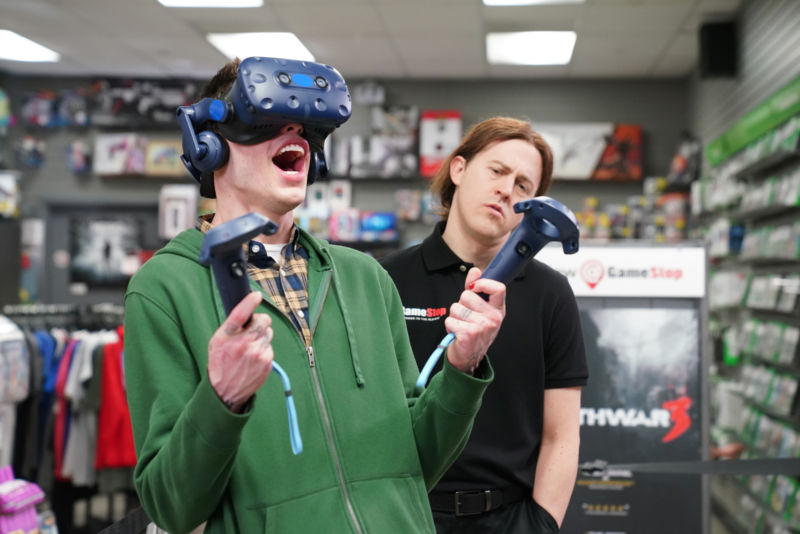Why the gaming world will be worse once GameStop is gone

Enlarge / Artist's conception of a customer virtually experiencing a world without GameStop. (credit: Ava Williams/NBC/NBCU Photo Bank via Getty Images)
Major game retailer GameStop has been having more than its fair share of struggles lately. After giving up on a search for a buyer in January, the company posted a massive loss of $674 million for the most recent fiscal year. As of today, GameStop stock is trading at less than 9% of its recent peak value in late 2015, and the continuing rise of digital game downloads and even game streaming isn't likely to help the company recover.
GameStop's COO and CFO departed the company after multi-decade tenures earlier this year. And the bad fortune continued yesterday as news broke that GameStop was laying off 50 of its "field leaders," including regional managers, HR staff, and loss prevention leaders. This move comes as part of a "Gamestop Reboot" program designed in part to rebuild stores as gathering places for esports and retro gaming fans.
For many consumers, the seemingly imminent demise of GameStop is not a cause for sadness. The company has a reputation in many corners for poor prices on trade-in games, high-pressure sales tactics for extraneous add-ons, unfriendly staffers, poor return policies, and, in recent years, stores filled with toys and Funko Pop figures instead of games. (RIP to GameStop subsidiary ThinkGeek, by the way.)
Read 22 remaining paragraphs | Comments